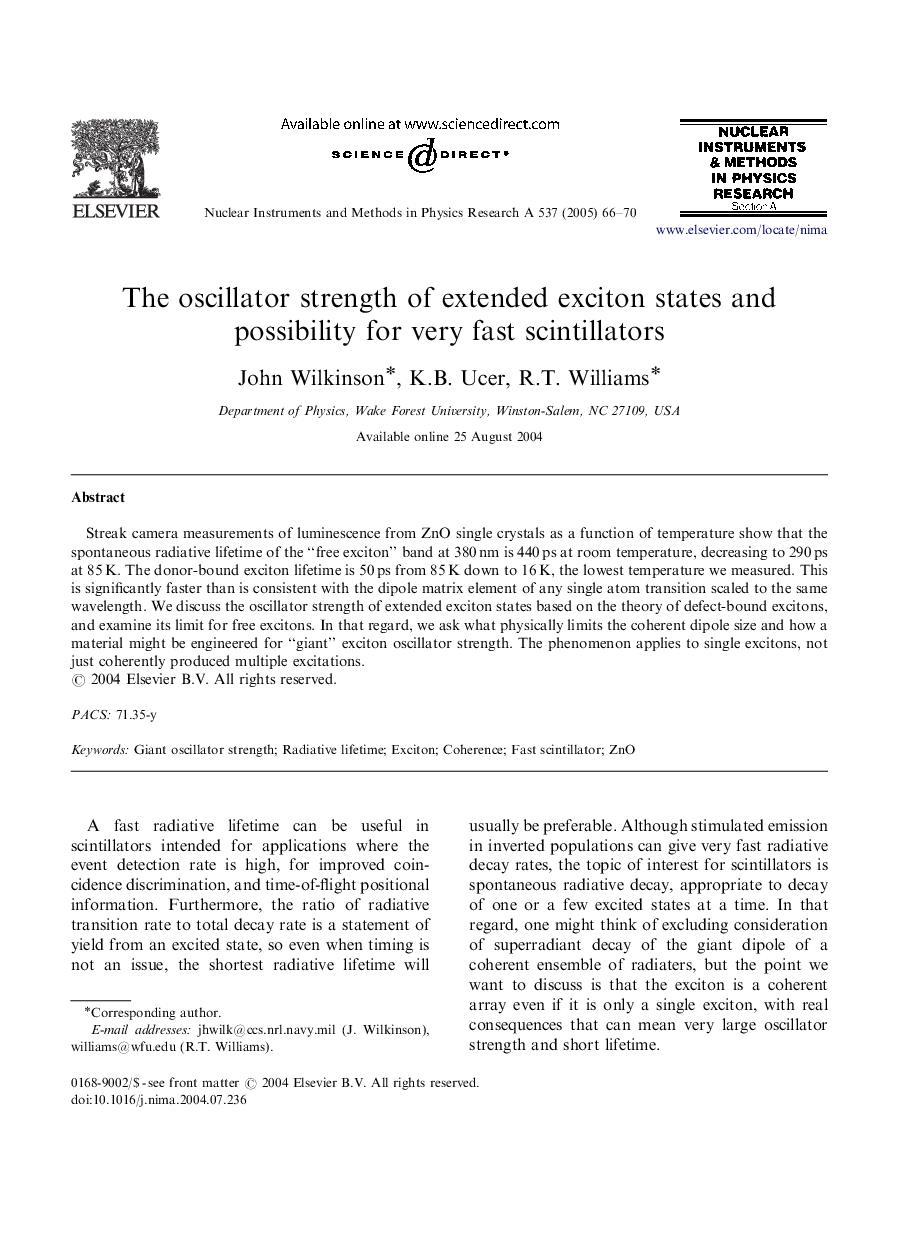| Article ID | Journal | Published Year | Pages | File Type |
|---|---|---|---|---|
| 9845854 | Nuclear Instruments and Methods in Physics Research Section A: Accelerators, Spectrometers, Detectors and Associated Equipment | 2005 | 5 Pages |
Abstract
Streak camera measurements of luminescence from ZnO single crystals as a function of temperature show that the spontaneous radiative lifetime of the “free exciton” band at 380Â nm is 440Â ps at room temperature, decreasing to 290Â ps at 85Â K. The donor-bound exciton lifetime is 50Â ps from 85Â K down to 16Â K, the lowest temperature we measured. This is significantly faster than is consistent with the dipole matrix element of any single atom transition scaled to the same wavelength. We discuss the oscillator strength of extended exciton states based on the theory of defect-bound excitons, and examine its limit for free excitons. In that regard, we ask what physically limits the coherent dipole size and how a material might be engineered for “giant” exciton oscillator strength. The phenomenon applies to single excitons, not just coherently produced multiple excitations.
Related Topics
Physical Sciences and Engineering
Physics and Astronomy
Instrumentation
Authors
John Wilkinson, K.B. Ucer, R.T. Williams,
